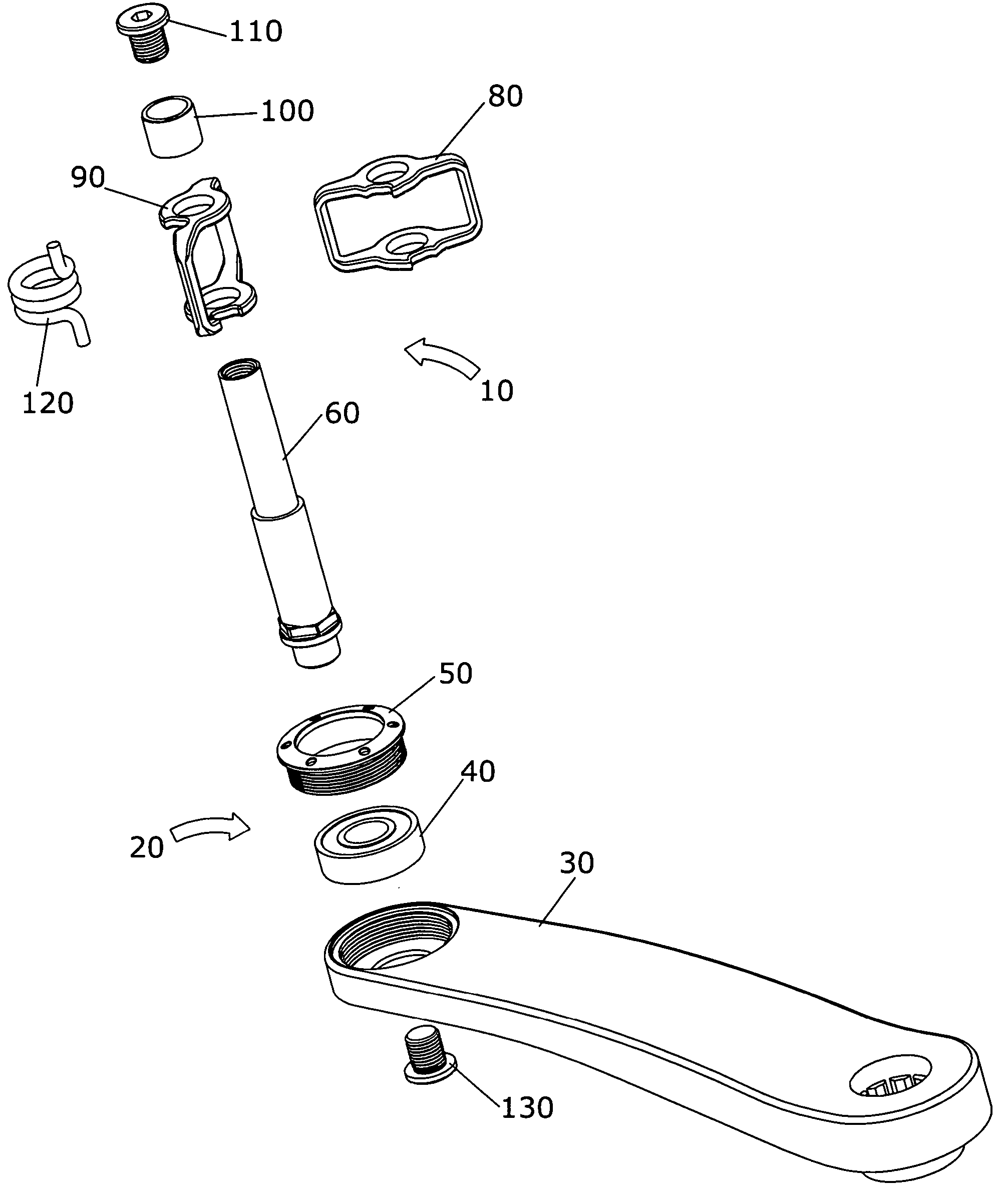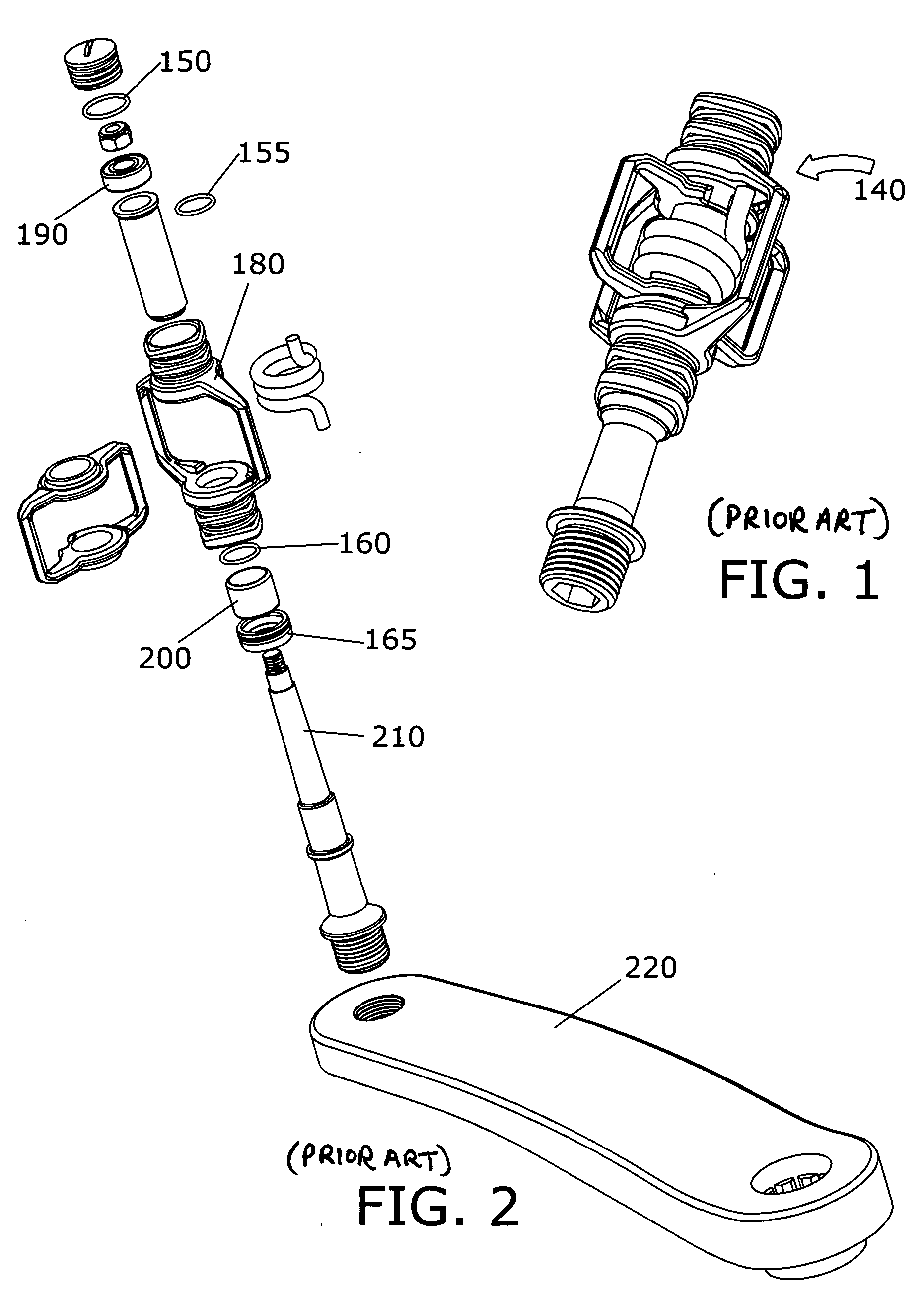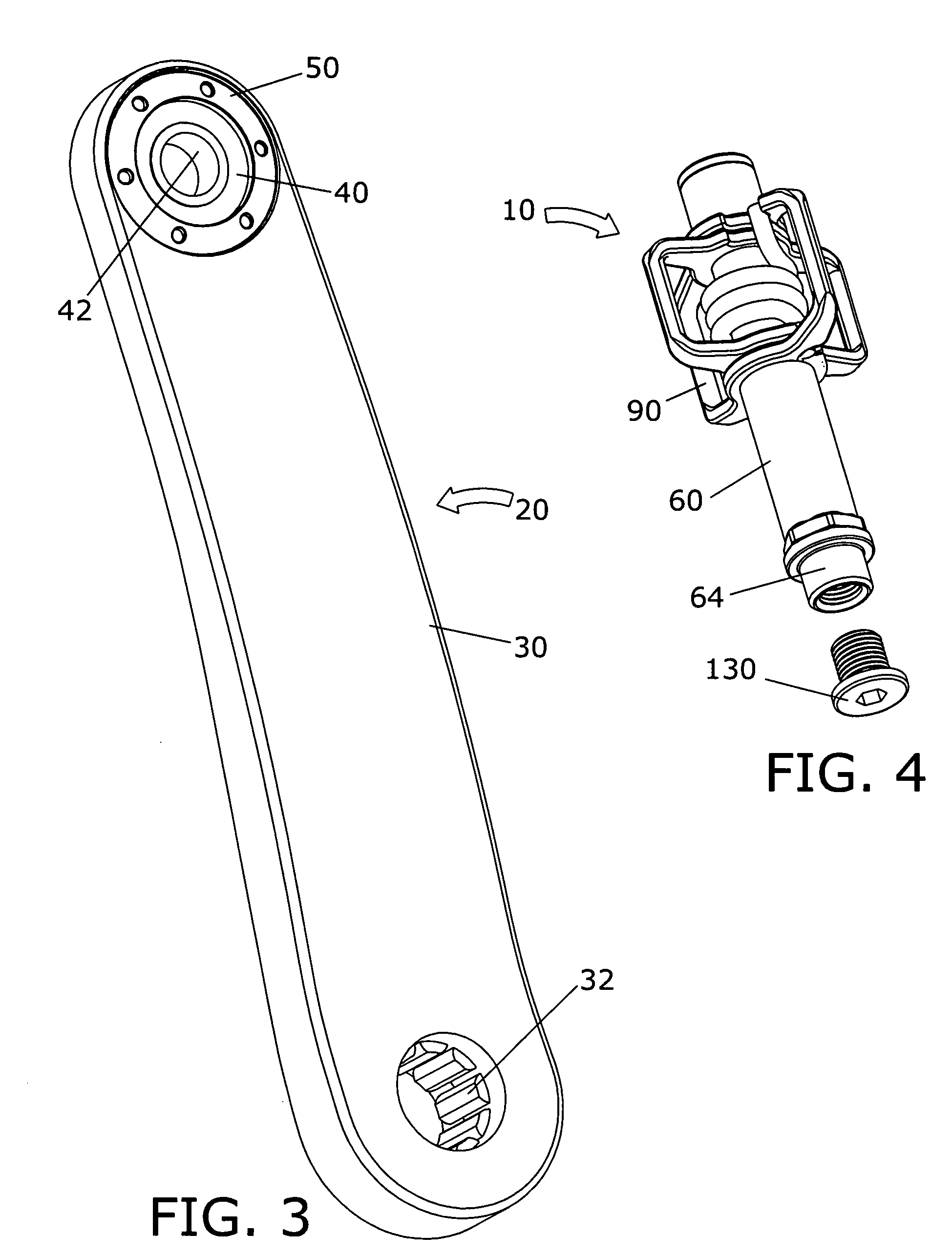Bicycle pedal and crank apparatus
a crank and pedal technology, applied in the field of bicycles, can solve the problems of poor performance, increased cost, and more components, and achieve the effects of maximizing the stiffness to weight ratio, reducing the number of components, and reducing the cost of production
- Summary
- Abstract
- Description
- Claims
- Application Information
AI Technical Summary
Benefits of technology
Problems solved by technology
Method used
Image
Examples
Embodiment Construction
[0046]FIG. 1 shows a relatively simple prior art clipless pedal 140.
[0047]FIG. 2 shows the components of the relatively simple prior art clipless pedal 140 shown in FIG. 1. There is one static seal 150 and there are three dynamic seals 155, 160, and 165 necessary to keep contamination away from internal cartridge bearing 190 and bushing 200. Pedal 140 has only 13 components, whereas most clipless pedals have between 15 and 50 components. After spindle 210 is screwed to crank arm 220, body 180 turns in relation to crank arm 220. In other words, after assembly, spindle 210 is effectively fixed to crank arm 220, and body 180 rotates freely on bearing 190 and bushing 200. Prior art pedals, all have some form of body that rotates around a spindle. A fixed shaft in a pedal is believed to be unique.
[0048] The present invention may be understood by referring to FIGS. 3-15. By way of example, referring first to FIGS. 3 to 9, it will be seen that the foregoing and other objects are attained...
PUM
 Login to View More
Login to View More Abstract
Description
Claims
Application Information
 Login to View More
Login to View More - R&D
- Intellectual Property
- Life Sciences
- Materials
- Tech Scout
- Unparalleled Data Quality
- Higher Quality Content
- 60% Fewer Hallucinations
Browse by: Latest US Patents, China's latest patents, Technical Efficacy Thesaurus, Application Domain, Technology Topic, Popular Technical Reports.
© 2025 PatSnap. All rights reserved.Legal|Privacy policy|Modern Slavery Act Transparency Statement|Sitemap|About US| Contact US: help@patsnap.com



